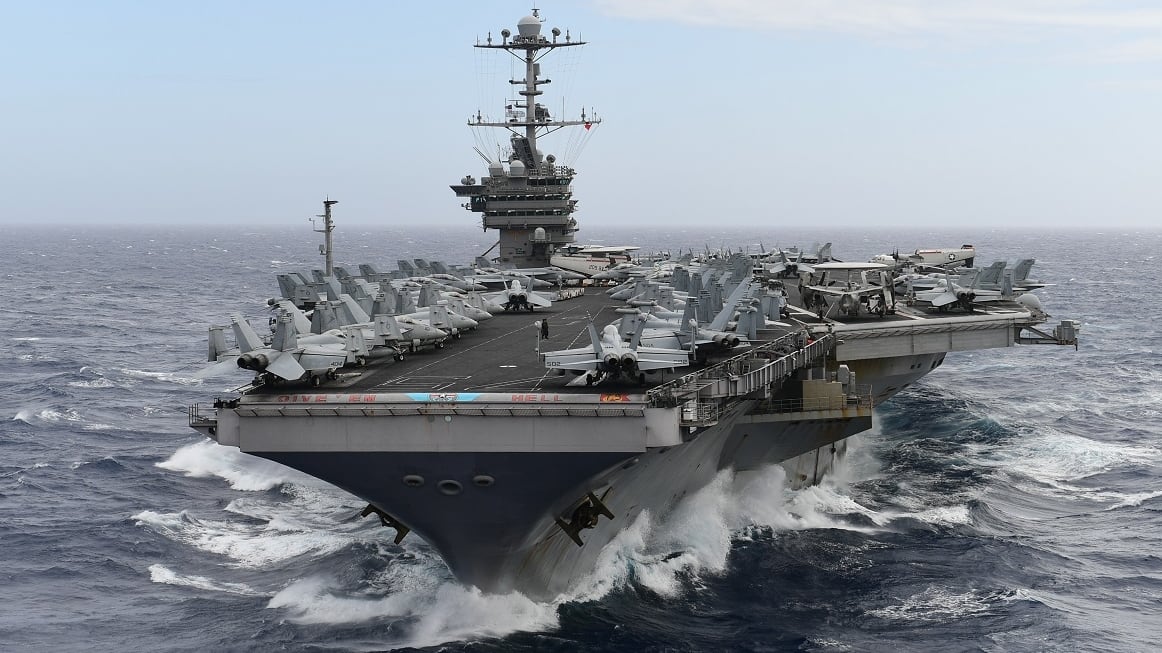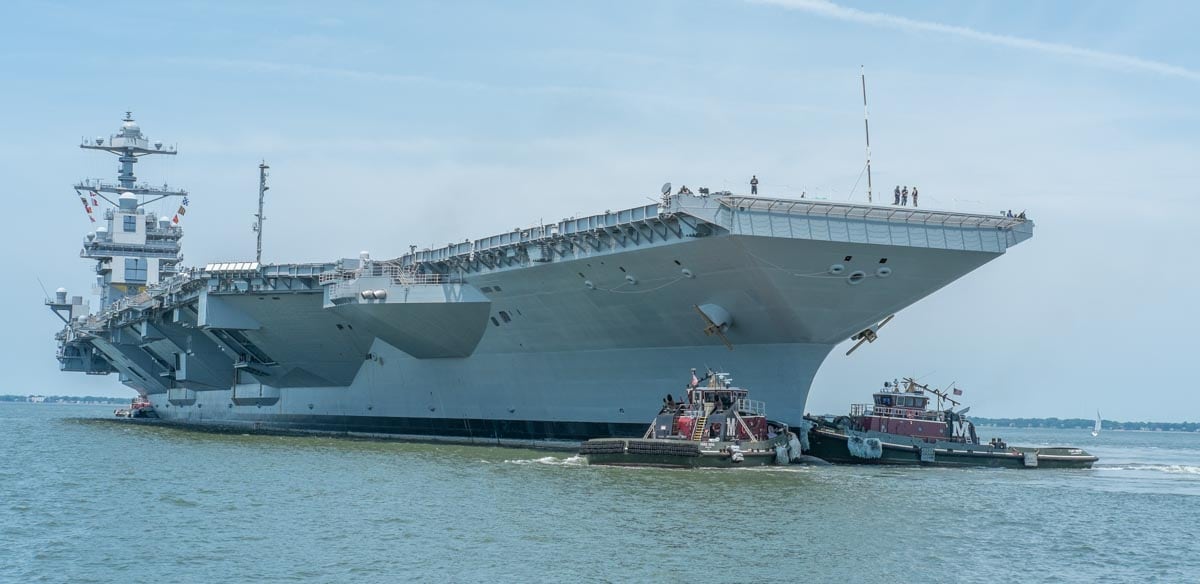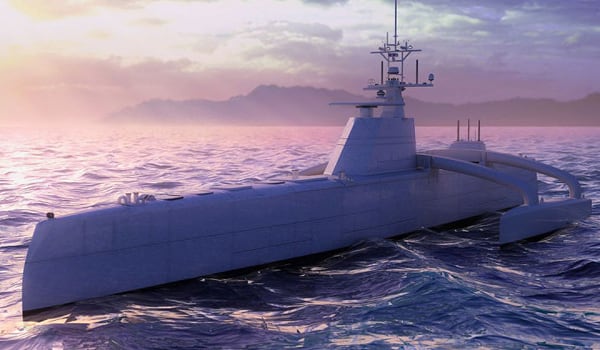WASHINGTON — The Pentagon’s decision to decommission the aircraft carrier Harry S. Truman appears to be sputtering and dying in a wave of skepticism and resistance from lawmakers.
As acting Pentagon chief Patrick Shanahan prepares to testify before House lawmakers Tuesday on the Pentagon’s budget, he’s likely to face intense scrutiny over the Truman proposal, which has yet to yield much if any support from members of Congress. Among the committees responsible for authorizing the use of funds by the Pentagon, there has been virtually no public support for the plan, which the Department of Defense justifies as a “hard choice” to invest in other technologies that may be important to future fights.
But further, public statements used to sell the plan acknowledge holes in the analysis done prior to rolling out the decision, which raises questions about how much careful consideration went into the proposal to make such a drastic force-structure change.
RELATED

By the Navy’s own admission, the service and the DoD have not completed a force structure assessment, which is used to examine the composition of the fleet and determine what is needed to offset adversaries in the future. The Navy’s top officer, Chief of Naval Operations Adm. John Richardson, said earlier this month that an ongoing FSA would be completed by the end of the year.
And what’s more, the Navy says an analysis by the geographic combatant commanders — four-star generals and admirals who determine and request the military forces their specific area of the world requires — has yet to be completed.
The Office of the Secretary of Defense as well as the Navy contend that the move is driven toward investments in yet-to-be fully developed long-range fires and unmanned technologies, a result derived from a backroom deal between the Navy and OSD amid debate over the future of carriers. But some analysts and lawmakers, while lauding the department’s push toward new technologies, have questioned the analysis and wisdom behind cashing in a midlife carrier to do it, noting that the vessels are destined to be part of the fleet for more than 50 years.
After a week of queries from Defense News seeking clarification on what analysis was conducted prior to the decision to announce Truman’s decommissioning 25 years early, OSD was unable to produce any such characterization or point to any analysis, saying in a statement that it was “a strategic choice, emblematic as we transition to the future force.”
“The carrier is critical to the NDS and will remain key to the Navy,” the statement reads. “The two-carrier purchase and the Truman were an integrated decision — it modernizes the force and increases lethality. It frees up funding to invest in future force: unmanned surface and subsurface [and] long-range weapons.”
OSD believes it can save upward of $4 billion by canceling the refueling of the ship, but in 2020, the move only nets about $17 million, according to a USNI report. The Truman would need to be retired by the mid-2020s, according to Shanahan’s recent testimony.
But making a “strategic choice” without completing ongoing analysis is unwise, said Thomas Callender, a retired submarine officer and analyst with The Heritage Foundation.
“The decision to make a major force structure change … prior to the updated force structure assessment providing the war-fighting and operational analysis to support such a decision is premature,” he said.
RELATED

Skepticism
Lawmakers have expressed skepticism since the decision was announced, with many arguing that it’s a bonkers policy to first ask Congress to authorize, then sign a contract for. two aircraft carriers, only to make a move away from aircraft carriers with the decision to decommission Truman.
Virginia Democratic Sen. Tim Kaine told Breaking Defense that, in light of the recent decision to buy two carriers, “it makes no sense for them to turn around and propose scuttling funding for another aircraft carrier that has over 20 years of service left.”
“If these reports are true, DoD should expect a lot of questions from me about why they would even consider this mind-boggling proposal,” he said.
The chairman of the Senate Armed Services Committee, Sen. Jim Inhofe, R-Okla., said he was “disturbed by the idea that we will be taking Truman out of the system,” and he raised concerns about carrier numbers.
The Navy’s most recent shipbuilding plan shows that if the Truman were to be decommissioned, the fleet could dip to nine aircraft carriers by 2046, which is three less than the current 12-carrier requirement.
House Armed Services Committee’s Seapower and Projection Forces Subcommittee Chairman Joe Courtney, D-Conn., told Defense News that there was “zero” chance that the plan moves anywhere in terms of authorization this year in his committee. He later added that “the Truman is only about 25 years old, which in [terms of] an aircraft carrier is actually pretty young. So we just approved a two-carrier block buy in September. So to do that and then reduce the size of the carrier fleet seems like a contradictory policy, as far as I’m concerned.”
His Republican counterpart on the House Armed Services Committee also questioned the deal.
In a recent op-ed, Rep. Rob Wittman, R-Va., called the carrier an “unmatched capability” that “is the strategic advantage the United States has over our adversaries — the competitive advantage that allows us to control the sea. Our carriers act as a powerful deterrent to rival nation states.”
Wittman predicted that the move by the Trump administration, which echoes a 2013/2014 push by the Obama administration to decommission the carrier George Washington to save money, would meet the same fate.
“Any attempt to delay the procurement of Ford-class carriers or maintenance timelines for Nimitz-class carriers is strategically and fiscally irresponsible and will undoubtedly be met with the same resistance as it did in 2014,” Wittman wrote.

‘Civil War’
The move to decom Truman is the result of a deal cut between the Office of the Secretary of Defense — its Cost Assessment and Program Evaluation office being the driving force — and the Navy. In that deal, the Navy traded the service’s early 2019 contract to buy two Ford-class aircraft carriers from Huntington Ingalls Industries for canceling the Truman’s refueling, according to multiple media reports and confirmation to Defense News by defense officials who spoke on background.
The backdrop for the move is an ongoing “civil war” over the future of carriers in the military, according to a recent report in Foreign Policy. Under Defense Secretary Jim Mattis, OSD began pushing the idea that by 2040 the carrier would no longer be relevant against peer adversaries, Foreign Policy reported. The carrier is under threat from evermore sophisticated Chinese anti-ship cruise missiles with ranges out to 1,000 nautical miles from shore, and the loss of the ship is untenable, the argument goes.
Furthermore, Mattis’ acting successor, Shanahan, has also taken up the cause, pushing for a gradual step back from carriers.
The Navy internally pushed back on that idea, arguing that a mobile airfield is will remain more valuable than a stationary one, and that tactical aircraft will be needed in a fight with China or Russia.
Publicly, the DoD maintains that it’s committed to carriers, but, somewhat disjointedly, pivots to investments it’s making in the areas of hypersonics ad unmanned technologies.
“We harvested savings in terms of the two carrier buy, but also the Truman recapitalization, and canceling that availed other opportunities for the department to invest in new areas,” a defense official said, speaking to reporters on background in conjunction with the fiscal 2020 budget rollout. “We’ve got further experiments to do, but those resource that were made available there will be applied to new war-fighting techniques as we look to the future.”
RELATED

The Navy in 2020 is procuring a large unmanned surface combatant, part of the effort to distribute fires and sensors away from large manned combatants that control them. But so far it seems no such large unmanned hull exists. The hypersonics and other long-range, long-standoff weapons that the DoD believes will recoup the advantage from China are also still in development and not mature.
Moving away from a mature technology without conducting a thorough analysis on the hope that new technologies pan out is foolish, said Callendar, the Heritage Foundation analyst.
“The Navy will have [aircraft carriers] for at least another 40-50 years in some capacity,” Callender said. "Rather than declaring victory for the Chinese and just decommissioning them all, OSD and the Navy should focus on near- and longer-term capabilities and concepts of operations that will make the carriers and carrier strike groups more survivable and able to fight where needed.
“Some of these are the capabilities OSD is directing the Navy to invest in that will indeed make the [carrier strike group] more survivable and lethal in a great power war. The primary focus should be on longer-range, survivable air-launched weapons for [carrier air wings] and new manned and unmanned strike/fighter carrier aircraft with longer range and the ability to penetrate enemy air defenses better.”
In the end, it doesn’t have to be an either/or proposition, he noted.
“It should not be all-in for high tech weapons and give up on current fleet and air wing,” he said. “OSD should strive to develop emerging technologies and weapons that can regain the strategic advantage, while also adding more mature capabilities today and developing new tactics and [concepts of operations] to address an adversary’s weakness with current forces and weapons systems used on different platforms and new missions other than original design.”
But others question whether continuing to develop the aircraft carrier is the right approach if technology that will only continue to advance threatens the ship type’s viability.
“The history of warfare is a history of the ebb and flow between offensive and defensive capabilities,” said Jerry Hendrix, a retired Navy captain and analyst with The Telemus Group. "The supercarrier has been the exemplar of offensive power projection for a century now but it appears that either the enemy has gained an advantage in defensive fires from shore or that the Navy has decided that the cost of investing in a new longer ranged carrier airwing is just too great a burden at this time.
“It appears that we have taken the first step towards moving away from the carrier as the centerpiece of American naval power perhaps toward more submerged capabilities, or hypersonic missiles launched from surface or submerged platforms. Either way the Navy seems intent on regaining the ability to project power ashore and hold the enemy at risk effectively.”
David B. Larter was the naval warfare reporter for Defense News.





